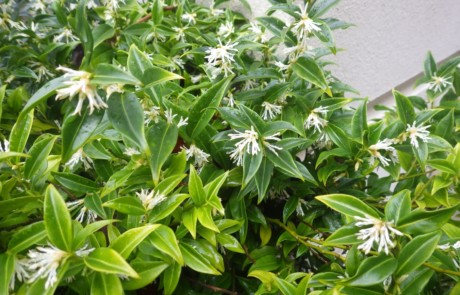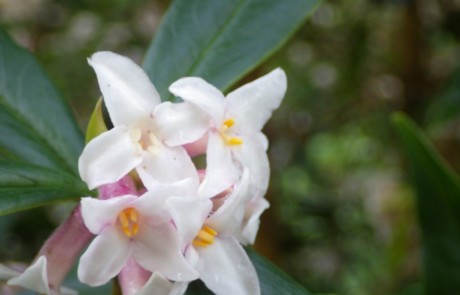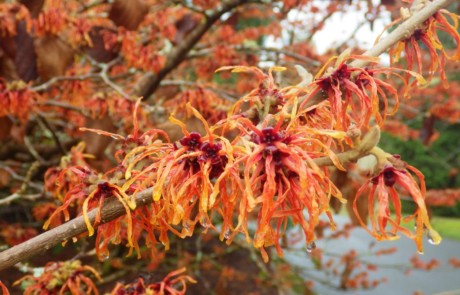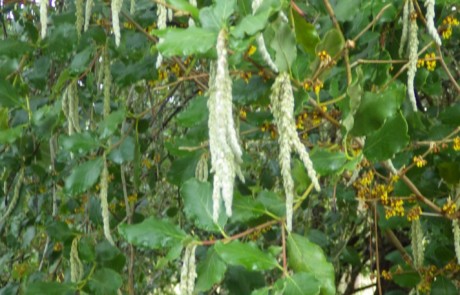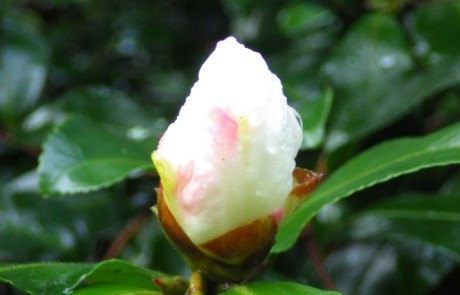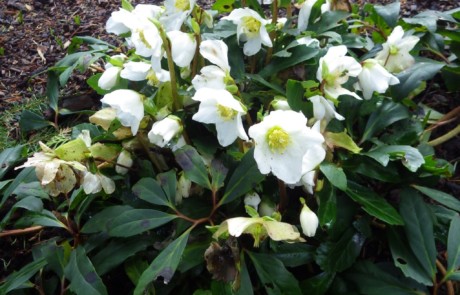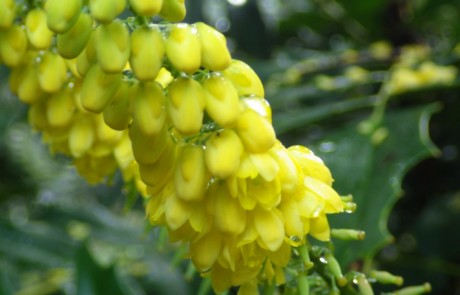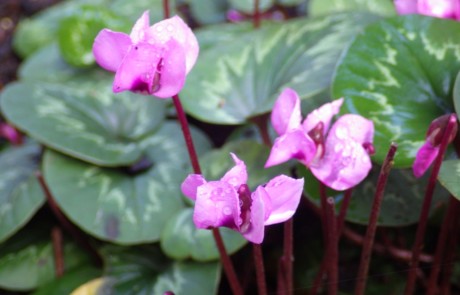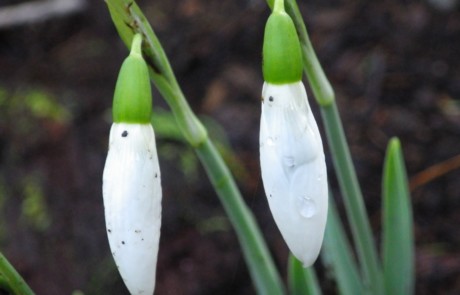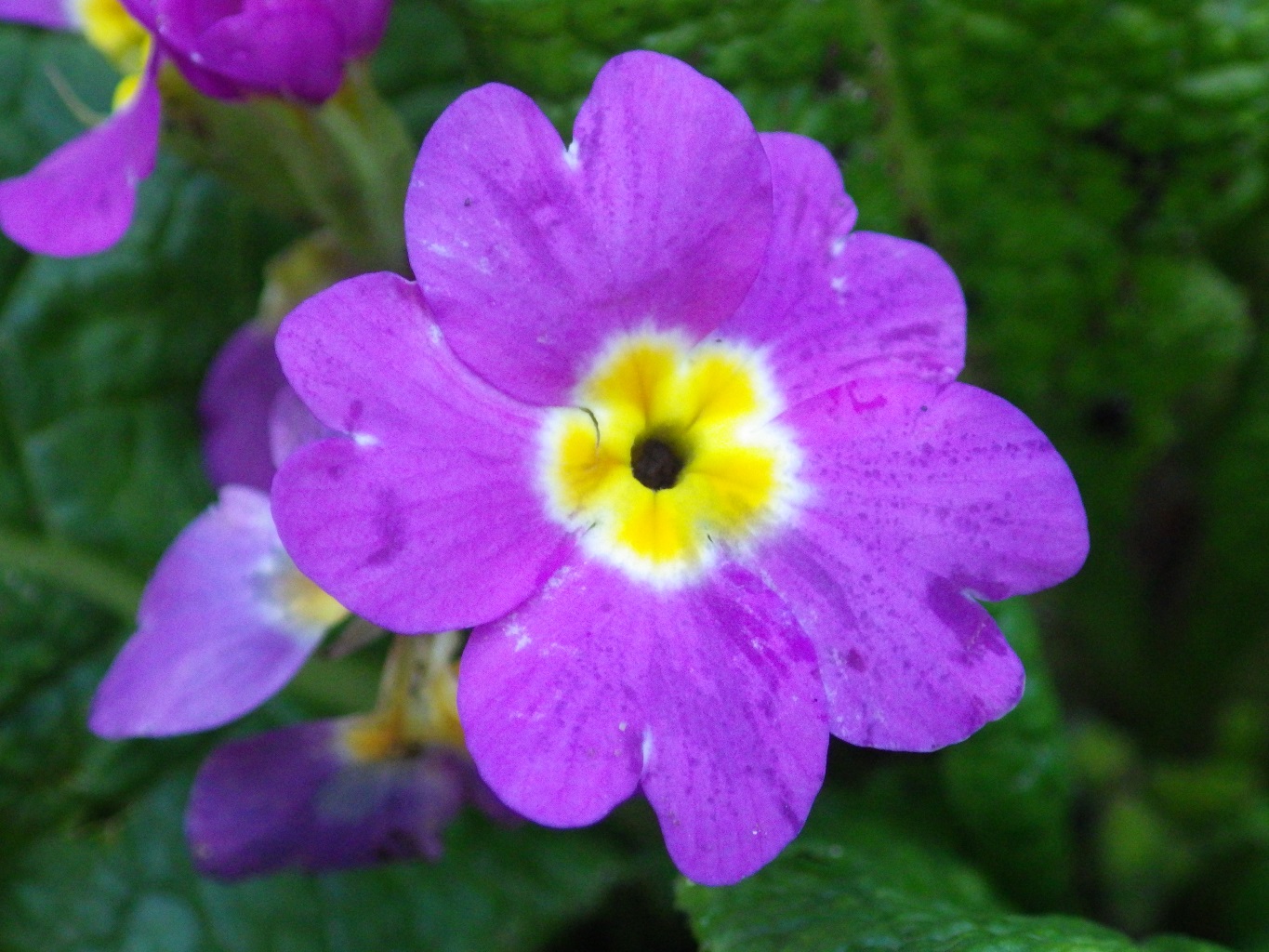Blooms in Winter
Winter is often considered a rather “dead” time of year in the garden, but visitors to Bloedel Reserve will tell you there is still much to enjoy. Even though the blooms of summer may be gone, there is more to nature than flowers. Fortunately for flower lovers, however, the Reserve has plenty of plants blooming during the winter months to remind us that spring isn’t the only season to offer up vivid colors and striking scents.
The Nose Knows
In the middle of January, near the Gatehouse and the Residence, a blooming evergreen shrub may, in fact, grab your attention with its fragrance rather than its blooms. Sweet Box (Sarcococca confusa) produces creamy white, small flowers with a big scent. After a dreary November and December, its spring-like perfume is especially welcome.
Another powerfully fragrant, evergreen winter bloomer is the Nepalese Paper Plant (Daphne bholua). Two specimens can be found on the Horseshoe Trail at the top of the Glen. Another plant is situated along the Waterfall Trail, just before you enter the Birch Garden. The white flowers of this Daphne variety are larger and more showy than those of the Sweet Box.
Ribbons and Tassels
Various varieties of Witch Hazels are planted throughout the Bloedel grounds. Most produce yellow flowers, but in a planting bed near the entrance you’ll see three Jelena Witch Hazels (Hamamelis x intermedia ‘Jelena’), which produce orange flowers. Mildly fragrant, each flower sports four ribbon-like petals. Blooming from late winter to early spring, these specimens at Bloedel typically produce a weaker, second bloom in late summer.
Located in two beds across the road from the Jelena Witch Hazels, you’ll see specimens of Wavyleaf Silktassel (Garrya elliptica), a coastal native of southern Oregon and California. In the winter, Silktassel produces long, hanging, silver catkins (“tassels”) that contrast nicely with its evergreen foliage. At the Reserve, these tasseled plants can also be found along the Birch Garden trail.
Perennial Favorites
Depending on the variety, Camellias can be good winter bloomers, though some are better spring bloomers. The Camellias at Bloedel Reserve will begin to bloom in the later weeks of winter (generally in February and March). The best spots to see Camellias at the Reserve are on the east side of the Residence and, of course, along the aptly named Camellia Trail, just past the Reflection Pool. The Camellias at the Reserve produce blooms in shades of white, pink, and red.
Bloedel Reserve also has Hellebores (Helleborus spp.) in many locations. Hellebores are evergreen perennials that reliably produce winter blooms, often en masse. Their colors can range from greens and whites to pinks and maroons. The Glen has the highest concentration of Hellebores at Bloedel. The Gatehouse has a few patches of Helleborus ‘Ivory Prince.’ Notable for its silvery foliage and creamy flowers, this variety usually begins to bloom in January.
Bright and Bold
Both native and introduced varieties of Oregon Grape (Mahonia spp.) have either been planted or have occurred naturally at the Reserve. Producing spikes of bright yellow flowers, they are frequented by humming birds in the winter. (I saw two just last week!) Like the Witch Hazels, the Mahonias generally bloom again in late summer, but their second bloom rivals the first in intensity.
In the Glen along the trails, look for various species of diminutive Cyclamens. Sporting white, pink, or bright magenta flowers, they can also be identified by their boldly variegated leaves. Even at only a few inches tall, these flowers will easily grab your attention as you wander up the trail.
Tiny Harbingers of Spring
If there is a flower that has the role of “Harbinger of Spring,” it is the Snowdrop (Galanthus nivalis). Related to amaryllis, Snowdrops are much smaller — only six inches tall. Snowdrops are one of the earliest blooming bulbs, beating even daffodils to make their appearance. Because of their size, they make the best visual impact when they are planted in large swaths.
For the last 25 years (if not longer), the Primrose variety Primula ‘Wanda,’ greets visitors at the trail at the top of the Glen. This low-lying plant produces pinkish- lavender flowers with yellow centers. These Primroses are spaced several inches apart, with moss placed in between the plants to create a fairy tale-style garden.
Related to the Witch hazels mentioned above, Winter hazels (Corylopsis spp.) are also among the winter bloomers, but their flowers are quite different. The creamy yellow Winter hazel flowers form in short, droopy catkins, before the plant’s foliage emerges in the spring. At Bloedel Reserve, most Winter hazels can be found at the Gatehouse, in the Glen, and near the largest pond in the middle of the grounds.
From January to March, you’ll find most of these winter bloomers on view before the true spring flowers start making their appearances. Come and enjoy these winter plants that were never told they can’t bloom in the cold.
Content provided by Bloedel Reserve Moss Garden Specialist Darren Strenge. Photos by Horticulture & Design staff Darren Strenge and Joe De Maio.
SIGN UP FOR OUR ENEWSLETTER
Stay up to date on all of the events and activities taking place at Bloedel Reserve.


